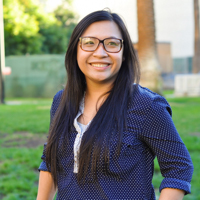Home >Blog > Post
By Bonnie Hagemann, CEO, Executive Development Associates, Inc.
 Meet Kelly Tran. Kelly is the founder and CEO of two companies, Appable and vakargo. She is 30 years old, and she is the perfect example of how generational differences are impacting workplace culture.
Meet Kelly Tran. Kelly is the founder and CEO of two companies, Appable and vakargo. She is 30 years old, and she is the perfect example of how generational differences are impacting workplace culture.
I first met with Kelly at Coffee Slingers, a creative coffee hangout in the urban renewal area of downtown Oklahoma City. There was no mention of a corporate boardroom or meeting space because that is not Gen Y’s preferred way of working. Kelly’s generation prefers to meet at coffee shops, outdoor cafes, and other such gathering places where creativity flows and corporate bureaucracy is basically nonexistent. Kelly’s only complaint about Coffee Slingers is that it is not open 24 hours a day, as young creatives like her often find their inspiration at any hour of the day or night. Fortunately for me, we met for lunch.
I sat down with Kelly to convince her to take on our technology platform. She showed up in jeans, a hoodie, and tennis shoes, carrying a backpack. Though I didn’t see them, I feel confident that her headphones and laptop were tucked away in her backpack.
Kelly took a quick look at our technology platform and immediately began to take our existing product to a higher level. Straight out of the gate she began suggesting intelligent and intuitive adaptations. She also politely told me that some of what we have is considered old “in the valley” (i.e., the Silicon Valley) and that it wasn’t my fault, as cutting-edge coders are often hard to find in this part of the country (i.e., Oklahoma City).
Kelly is originally from Vietnam. Her companies’ coders live in Oklahoma, California, and Vietnam, where she said coders are abundant. We swapped a few texts over the next few days and then followed up on our initial meeting with a call that included people from Missouri, Oklahoma, Texas, California, and Vietnam. We had no problems working from our remote locations. We shared one screen and worked efficiently through a demo and a few idea exchanges, then scheduled our next meeting.
This is a prime example of the way that Gen Y is changing the workforce and impacting corporate cultures across the globe. It’s more than just a change in the atmosphere and tactics of conducting business. It’s an entirely new way of thinking, creating, and collaborating.
It is just one of a million examples of how the workplace is shifting at warp speed. Corporate leaders are struggling to adapt at the same pace. I am pretty sure they will figure it out, but if they don’t, they will eventually get replaced by someone who can. Corporate leaders must learn how to lead and manage both the changes and the change makers in order to be successful.
One way to help the workforce adjust is through constant learning. Learning and development play a vital role in preparing leaders to thrive throughout this demographic shift, and assessments can help support this transition. Why? Because assessments reveal something, and they typically do so in a very concrete, black-and-white way through data analysis. Typical learning and development initiatives are focused on “soft” skills, such as communication and change management, rather than on hard skills, such as programming. Having hard data on hand provides both the learner and the facilitator with a tangible source of information to reference. I can tell you from my experience that getting a group of engineers to work on their communication skills goes a lot better when they have something concrete in front of them (i.e., their assessment results).
Assessments also reveal something about self or others, and that is both interesting and helpful in the learning process. While assessments do not need to be included in every learning and development initiative, I strongly believe that they should be included in the majority. In fact, I recommend that organizations choose a baseline assessment and make that a prerequisite for every other learning and development program. Having a baseline assessment aligns the organization, creating a common language that can be used for learning, performance evaluations, etc. It also prevents organizations from going with the “flavor of the month” as new people bring in new assessments. For this purpose, I recommend the MBTI® assessment based on my experience with its effectiveness, ease of use, extremely high reliability, and validity.
While Kelly is an entrepreneur, she is not unlike the many millennials in the corporate world today. They think differently, talk differently, work differently, and lead differently. Corporate leaders of today must begin focusing on bringing current and future generations together. Sharing a common language through a tool such as the MBTI assessment is a great first step in building a cross-organizational, cross-generational, and even cross-cultural bridge.